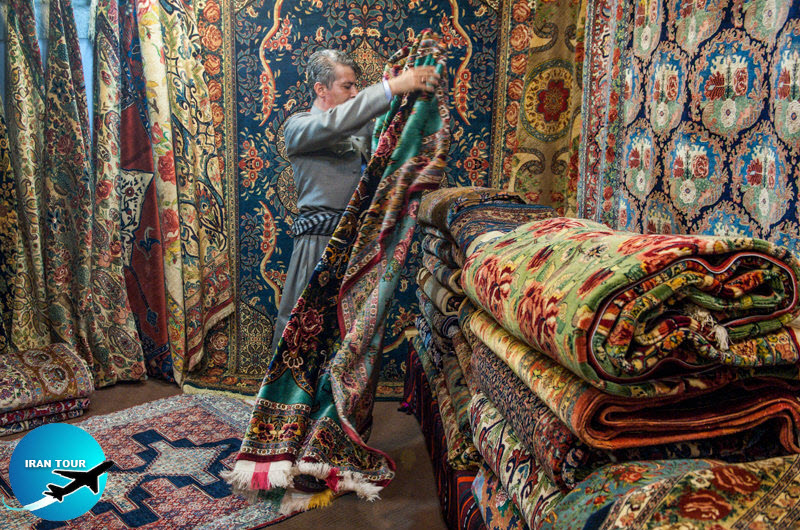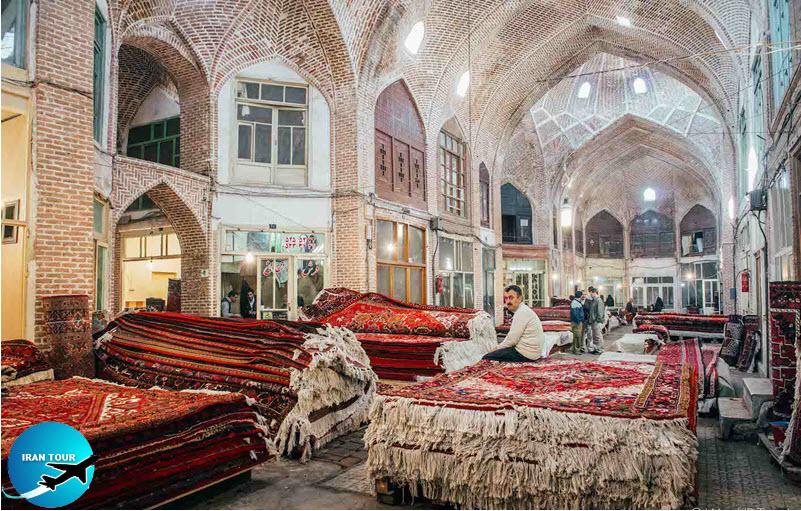Persian Carpet: The legend of the North West
One of the historical and artistic issues in carpets is the Harati carpets. The main idea of that case is in Taymouri's era. There were carpets that were woven in Harat and would carp he exported to India. During the Safavid era, some inventions occurred in those carpets which have been diminished by Safavid's termination. These carpets had non-broken edges motifs that apparently had no record before and originally were the Haratian painter’s artwork. According to the writer's opinion, this issue is considerable and northwest carpets should figure out as Haratian carpets.
A noticeable number of carpets of various sizes and marginal remained from the 16 century distinguished by the symmetric knots, and two woofs like Kurdish carpets. The variation of designing and Haratian motifs for the carpets is outstanding. In my opinion, it would make an issue that was not pointed out so far. The writer is not faced with a script that notices the carpets from this point of view. The northwest carpets are like precious merchandise with no Identity. The importance of these woven is their Haratian design and this motif that the oldest sample of them is also the oldest Haratian and Khorasanian samples or at least the Safavid samples at the same time.
 |
So, all the claims about the issue that Arthur Pope had made need to be revisited historically and geographically. Another issue is the variety of the maps of the northwest that reveals the idea that there is an artistic and historical background for these carpets of the northwest of Iran that is to say there is three issues that we encounter: 1. Historical issue 2. Geographical issue 3. Artistic issue. They are 2 lines of criticism leveled against the Harati theory. The first is that the Harati motif and forms are not exclusive to Harat and were used in other parts of Iran as seen on carpets from the northwest. The other line of criticism is that the plot of Harati form and the form itself are much older than the Taymouri era. These forms are also found on Egyptian carpets of the mamálik era, about 15 century A.D. As for the criticism, one should not that there is a kind of fish-vs-fish Harati motif that has never been found in Harat; This form has been prevalently used in the west of Iran (Farahan) where it was called Harati. The base of the fish-vs-fish motif is a large flower between two fish or two leaves. So several western researchers such as the pope use the same name to introduce the motif.
 |
As for the second criticism Harati carpet motives are also seen in the west of Iran. It is obvious that fish’s-fish Harati or the older motif of Harati would be a misnomer. So, it can be noted that basically the pope theory which is the basis for evaluating the northwest carpets, would undergo severe criticism. The history of carpet weaving in Iran after the pope has witnessed an evolutionary state with the advent of metal instruments, the discovery Paziric carpet, and old Harati motives which changes the uncertain pope theory. Unfortunately, these remarks are only seen as marginal notes in the pope's writing and do not affect the original article. One of the marginal Harati forms known as a teapot or samovar has a surprising history that shows Harati forms in an evolutionary process. To grasp this point, we should explain the motif and margin. In the motif on the margin of the teapot two Harati forms are used together repeatedly: i.e., Two fish with a flower or teapots in a cyclic form. This collection has ornamental and collective elements. This kind of teapot is very old and used in northwest carpets. Other motives are fish-vs-fish in Ghafghaz. Azerbaijan, Zanjan, Bijar, Farahan, Kurdistan and other places. In the picture, there are two forms that transformed fish into leaves still keeping the eyes in the next stage the leaf is branched into two twigs but the combination of this form with the flower (known as fish-semi flower) remains in the same shape and when combined with another leaf or twig it gives shape to dragon mouth. Then a Shah Abbasi is a water-lily or a fan-shade leaf placed in the center, and the motif is become complete by adding intricate ornamental elements. The pictures below depict simple and complicated types of motives based on the dragon's mouth and water lily that led to the form of the teapot.
-
Details
-
Category: IRAN Blog

